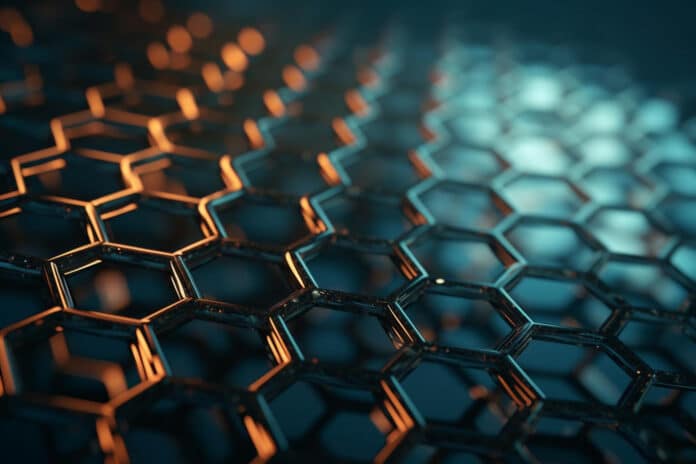A decade ago, scientists at The University of Manchester demonstrated that graphene is permeable to protons. This claim led to a debate in the scientific community because theory predicted that a proton would take billions of years to permeate through graphene’s dense crystalline structure. This gave rise to the hypothesis that protons enter crystals through their pinholes rather than the crystal lattice itself.
Now, scientists from The University of Warwick and the University of Manchester have finally solved the long-standing puzzle of why graphene is so much more permeable to protons than expected by theory. Scientists reported ultra-high spatial resolution measurements of proton transport through graphene.
The study proved that perfect graphene crystals are permeable to protons. Unexpectedly, protons are strongly accelerated around nanoscale wrinkles and ripples in the crystal.
The discovery might help the hydrogen economy grow faster. With the development of green hydrogen, the costly catalysts and membranes that are now used to produce and use hydrogen might be replaced with more environmentally friendly 2D crystals, thereby lowering carbon emissions and advancing the goal of Net Zero.
To detect the minute proton currents gathered from areas as small as a nanometer, the scientists employed scanning electrochemical cell microscopy (SECCM). Scientists could then see the spatial distribution of proton currents through graphene membranes.
According to some scientists’ theories, proton transport might occur through holes, where the currents would be concentrated in a few distinct locations. Since no such isolated places were discovered, holes in the graphene membranes could not have existed.
Scientists were surprised to notice absolutely no defects in the graphene crystals. The results offer microscopic proof that graphene is intrinsically permeable to protons.
The unexpected thing was that the proton currents were accelerated around nanometre-sized wrinkles in the crystals. The scientists discovered that this results from the creases effectively “stretching” the graphene lattice, creating more room for protons to pass through the unaltered crystal lattice. This finding now ties the experiment and theory together.
Dr. Marcelo Lozada-Hidalgo said, “We are effectively stretching an atomic scale mesh and observing a higher current through the stretched interatomic spaces in this mesh — this is mind-boggling.”
Prof. Patrick Unwin said, “These results showcase SECCM, developed in our lab, as a powerful technique to obtain microscopic insights into electrochemical interfaces, which opens up exciting possibilities for designing next-generation membranes and separators involving protons.”
Journal Reference:
- O. J. Wahab, E. Daviddi, B. Xin, P. Z. Sun, E. Griffin, A. W. Colburn, D. Barry, M. Yagmurcukardes, F. M. Peeters, A. K. Geim, M. Lozada-Hidalgo, P. R. Unwin. Proton transport through nanoscale corrugations in two-dimensional crystals. Nature, 2023; 620 (7975): 782 DOI: 10.1038/s41586-023-06247-6
